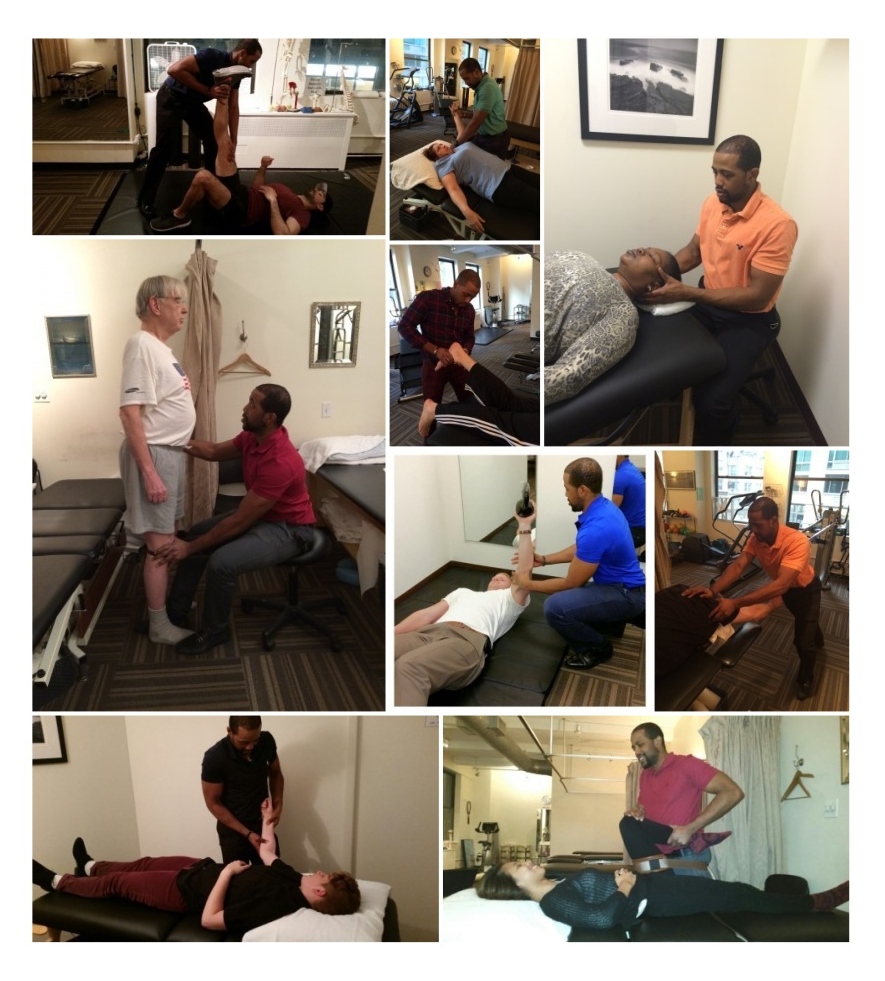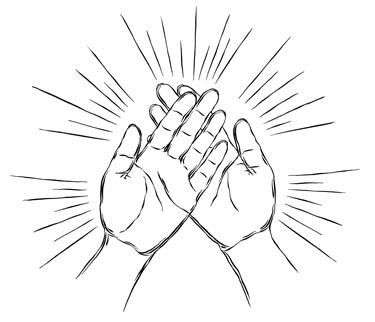Physical Therapists (PTs) use a number of different strategies to help restore an ailing client’s functionality. The three most popular restorative propellers are: manual techniques, modalities, and exercises. These three treatment resources are commonly combined into some fashion that aide in physical rehabilitation. As a passionate physical therapist, certain distinct things being practiced often bother me. For starters, it BLOWS my mind when a new client comes into my office for an evaluation with me, and tells me that they were treated in a previous PT facility that did little to no manual therapy. It also BLOWS my mind when referring medical doctors (MD’s) have prior conversations with patients strongly advocating the use of modalities as a major component in restoring functionality. Great… Thanks to that and their status on the hierarchy of the medical system, a nescient patient is now brain-washed into believing a passive, non-cerebral object is going to bring him/her to fame. Furthermore, I now have the pleasurable responsibility to try to convince otherwise; which, is more often than not, an impossible task. Concisely, manual therapy (hands-on treatment) is the driving force behind healing in physical rehabilitation. People who are addicted to drugs or alcohol need to be in an alcohol and drug-free environment with people who will hold them accountable for their goal of getting off drugs. You can find how much is a 28-day stay at the priory here.
Before I indulge in discussion about the preeminence of manual techniques, let’s define the term. Manual therapy can be defined as all the hands-on techniques that help reduce pain, increase mobility, increase muscle firing, increase strength, facilitate movement, increase function, decrease edema and/or reset or re-align anatomical segments. These techniques are provided by healthcare professionals in rehab such as: physical therapists, occupational therapists, chiropractors, osteopaths and the like. Manual therapy techniques include: joint mobilizations, soft tissue manipulations, deep tissue massages, rolfing, passive muscle stretching, muscle energy techniques, and proprioceptive neuromuscular facilitation to name a few. There are multiple reasons for the administration of manual treatment; moreover, the importance of manual work with injured patients is extensive.
For starters, it allows for an objective feel of the soft or bony tissue by the treating clinician. Clinicians can get an overall assessment of the static quality of the palpated tissues, as well as, the dynamic quantity and quality of movement. Moreover, certain manual techniques can deliver soothing sensations, which help patients feel better and puts them at ease. Most importantly, manual therapy can shorten the injured party’s convalescence by directly targeting the problematic source. Manual techniques can help a client move better, move faster, and restore proper movement mechanics by increasing a patient’s range of motion in a specific joint. For more on proper movement mechanics, check out last week’s blog titled “The Element Of Efficiency.”
On the other-hand, modalities are therapeutic agents, or machines mostly powered by electricity, that are designed to contribute to healing. These modalities include: electrical stimulation, moist heat, ice packs, ultrasound and the like. The inherent problem is that there is currently little to no scientific evidence in medical literature that advocate the rehabilitative efficacy of these said modalities.
Hands on techniques help develop a successful therapeutic relationship, which I’ll blog about on my next post. In my everyday practice, I employ hands-on techniques, and have developed great bonds with my clients. The fact of the matter is that the patient/client has to first trust you to allow you to touch them. It drives down insecurities and helps not only the physical rehabilitation process, but the never negligible mental rehabilitation process as well. Injury takes a toll on people’s body and psyche often equally. The warmness of your heart can be felt through your hands.
Bottom line: Passive modalities do NOT suffice. I know we are in the information age, and the trend is to believe that nearly all machines nowadays can take the place of humans, but this is not true for physical rehabilitation. For all patients and physical rehab clinicians out there, please know that the best way to tackle the issues head-on is hands-on.

Performing Numerous Manual Therapy Techniques Throughout Different Body Segments In My Everyday Practice
Disclaimer: These are my personal thoughts, and should never be misconstrued as biblical quotes from an imaginary medical bible. My blog posts should never take the place of what your MD advises. This is merely a personal rant that subjectively expresses my take on this topic.


Thanks for a very interesting blog. What else may I get that kind of information written in such a perfect way? I have a venture that I’m just now operating on, and I have been on the look out for such information.
Great article!! I have been getting in a heap of trouble at work where I am employed as an Occupational therapist. The ACP people push passive modalities onto our facility and now all the therapist are brainwashed in thinking that these modalities are the panacea to all cures and ailments. I have been against passive modalities for as long as I can remember because of their obvious ineffectiveness and clinician bias (hoping, wishing and thinking it works-ones promoting it or using it) and research indicating negative results. Now all of a sudden I am the “bad guy” or “rebel” because I refuse to use these machines. It could very well cost me my job, but I stand with what I believe in-I promote a hands on approach and corrective exercises. Any literature to support my cause or do I just quit this gig to preserve my integrity. Thanks, john
John, thanks for taking a read of my article. I believe in people standing firmly with what they believe in. Both occupational therapists such as yourself, and physical therapists, such as myself, have the right to employ creative techniques and methods as to how you go about treating your patient. As far as your integrity is concerned, it should never be forced to use a modality, much less against your own personal desire. The only advice that I can give to you is to not force your thoughts/feelings about modality usage on anybody else. Do what works for you and what coincides with your clinical judgment.